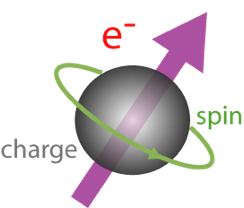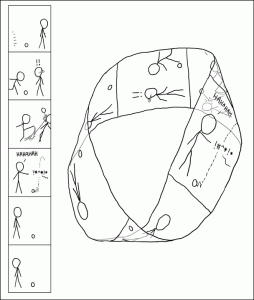I just read an intriguing article on the Mpemba effect at Skulls in the Stars. Between the history of the effect and the continuing puzzle of what causes it, this is the best example of science-as-a-process I’ve ever seen:
Mpemba made his accidental discovery in Tanzania in 1963, when he was only 13 years old and in secondary school. In spite of widespread disdain from his classmates, he surreptitiously continued experiments on the phenomenon until he had the good fortune in high school to interact with Professor Denis Osborne of the University College Dar es Salaam. Osborne was intrigued, carried out his own experiments, and in 1969 the two published a paper in the journal Physics Education.
…
So what did Osborne’s research show? He placed a 100 cm³ beaker filled with 70 cm³ of water on a sheet of insulating foam in a freezer, and timed how long it took for the water to freeze. For temperatures up to 20 °C, the time was roughly proportional to the temperature above freezing, up to a maximum of 100 minutes at 20 °C. For higher temperatures, however, the time dropped dramatically, down to 40 minutes for 80 °C water!
Be sure to read the complete article for the whole story, including many attempts to characterize the Mpemba effect over the years. 50 years later there still isn’t a strong consensus about what causes the effect, and in many cases it’s supposed to be difficult to reproduce.
To me, this is crying out for a citizen-science experiment with lots of participants, similar to the way Biocurious works. The experiments themselves are dirt simple (and cheap) to implement; all they really require is water, a heater, and a freezer. The rest is a matter of documenting all the (potentially) relevant variables, including the heater and freezer used, the source of the water, the type of containers, and even the geocoordinates of the experimenter. (Hey, who knows, right?)
A second generation of citizen-science experiments could then be designed based on trends in the first-generation data. The fun thing about this step is that (as Galaxy Zoo has shown) the data often suggests results that weren’t expected before it was being collected. (That shouldn’t be surprising; this is science after all.)
The point of each subsequent generation would be to build more accurate predictions of which experimental setups would or would not produce the Mpemba effect. Eventually it should be possible to make a set of statements like, “Heating 50 ml of 20 °C tap water in a 100W microwave for 90 seconds is 90% likely to reduce the time required to freeze it in a 1 m³ freezer by 35%.”
Why the citizen-science approach? I suspect that rather than trying to control all the known factors to produce the desired result, we instead want to track as many factors as possible to characterize the space of results. This particular effect will probably require a “vast multidimensional array of experiments“* to characterize properly, so enlisting a large number of citizen scientists makes a lot of sense.
Besides, each and every one of the test participants can have fun guessing at the real causes involved. Who doesn’t love a little armchair theorizing?
* Yes, I’m ‘citing’ Wikipedia. The original article cited there is inaccessible, and the rest of the Wikipedia summary is informative stuff.

 This may seem like an odd diversion, but
This may seem like an odd diversion, but 